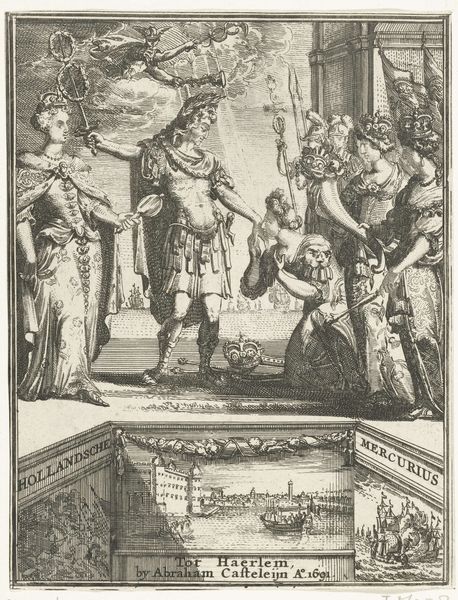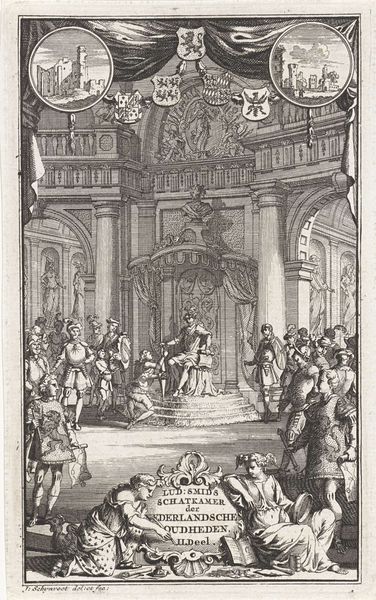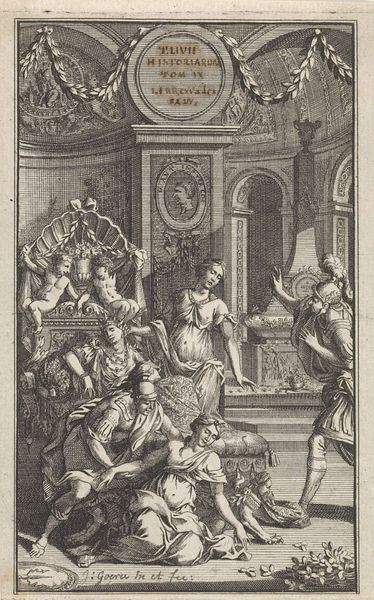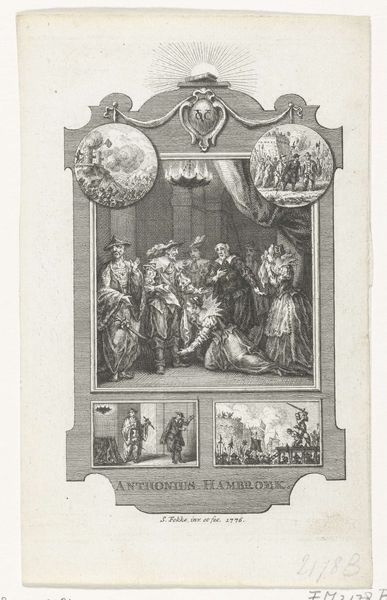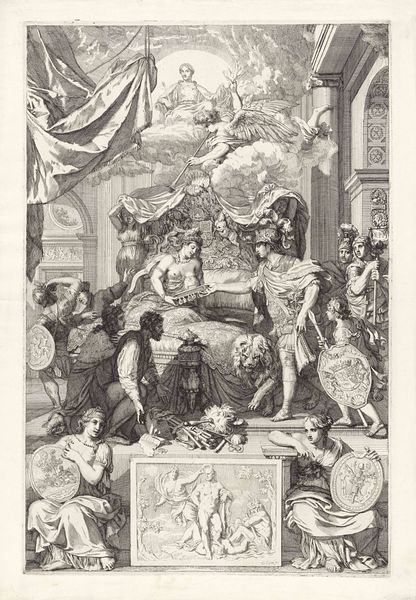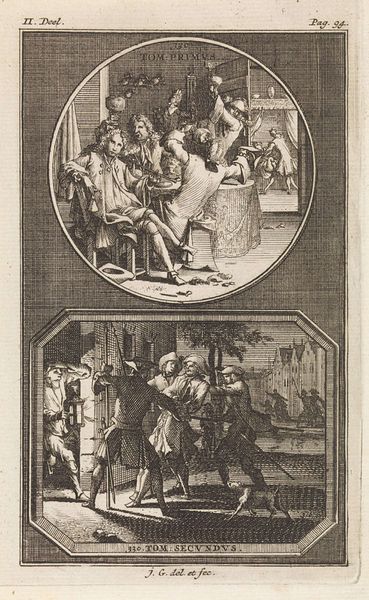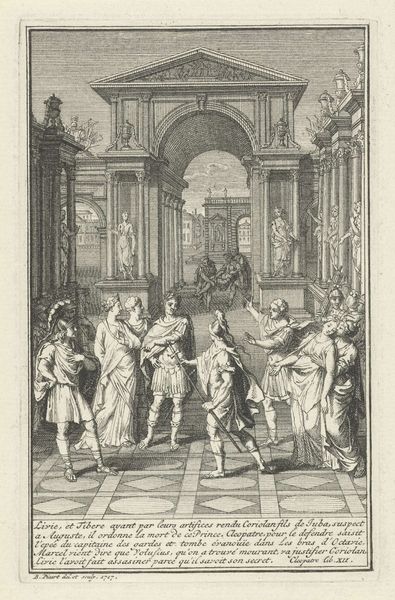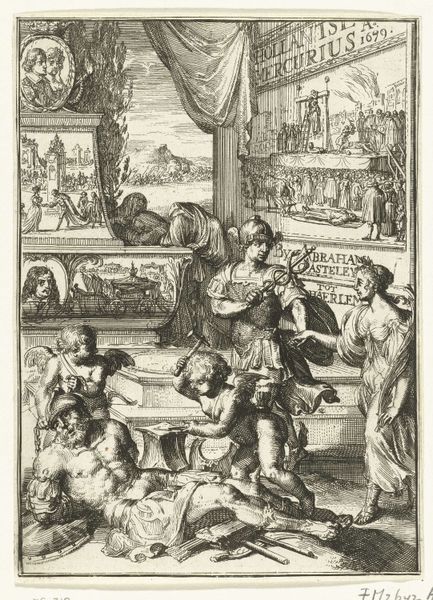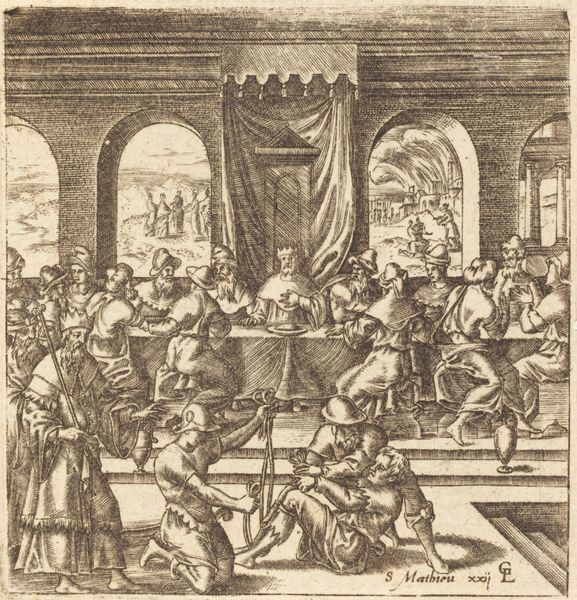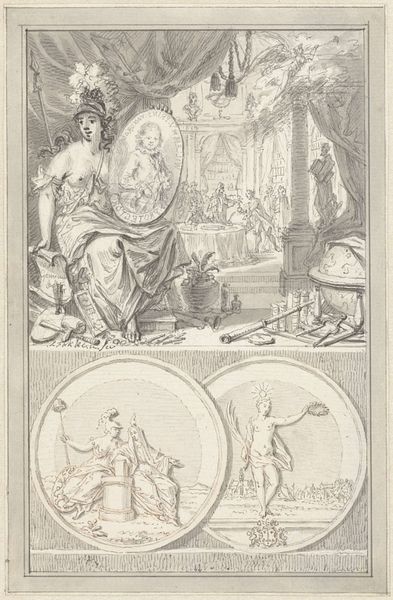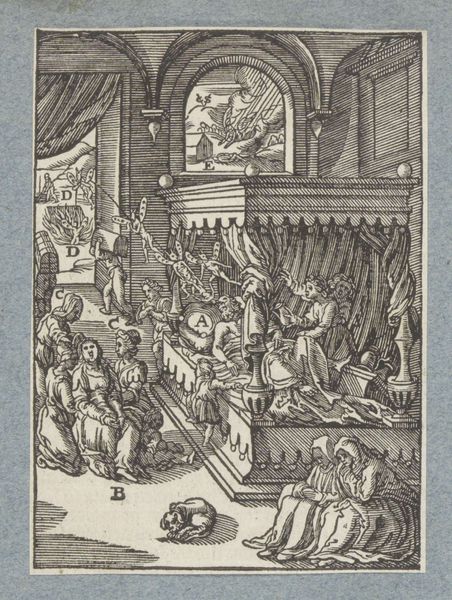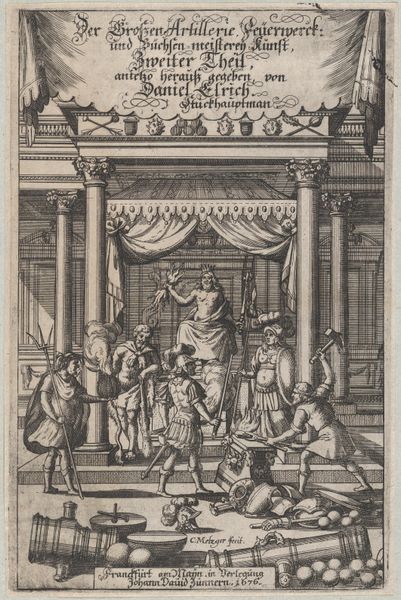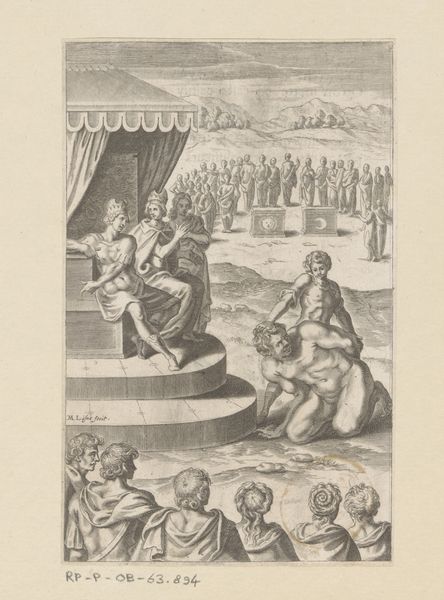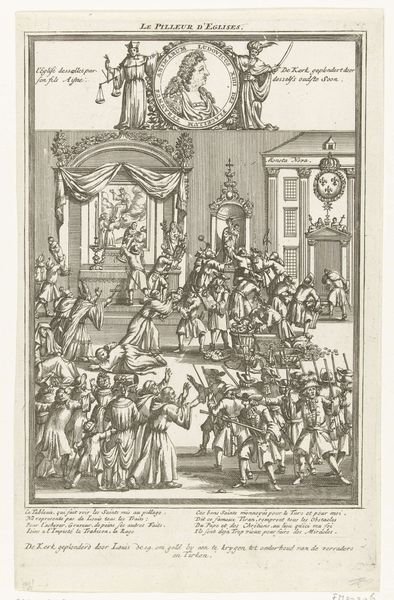
print, engraving
#
baroque
#
dutch-golden-age
# print
#
figuration
#
history-painting
#
engraving
Dimensions: height 188 mm, width 149 mm
Copyright: Rijks Museum: Open Domain
Editor: We're looking at "Salome Dancing Before Herod," a 1728 engraving by Pieter Tanjé. It's incredibly detailed! My first impression is that it stages power through these carefully constructed scenes. What strikes you most about this print? Curator: It's fascinating how Tanjé presents a biblical story through a lens shaped by the Dutch Golden Age's values. Look at the spatial organization. How does the print use the setting and figures to create a public, staged display? The act of Salome’s dance becomes almost secondary. Editor: That's true! The reactions of Herod and his court seem so crucial. Why do you think Tanjé chose this specific moment in the story? Curator: The choice is likely tied to the Baroque interest in dramatic narratives and public morality. By visualizing this moment, Tanjé critiques not just the individuals involved, but also the broader implications of unchecked authority and the corruption of power. Who benefits from this spectacle and who suffers? Editor: So it's less about Salome’s dance itself and more about what it reveals about the court’s ethical standing? Curator: Precisely. How does the architecture influence our reading of the scene? Think about what purpose a palace, the clothing of the king, or weapons and decor might play? Editor: I never thought of the architecture and staging as tools for critiquing power dynamics. That gives me a new way to consider art’s public function in any period. Curator: It's about how Tanjé, within his social context, used recognizable symbols to engage with and challenge ideas about authority and accountability. It’s also interesting that he stages different parts of the story simultaneously – he really wanted to show us what happened.
Comments
No comments
Be the first to comment and join the conversation on the ultimate creative platform.
